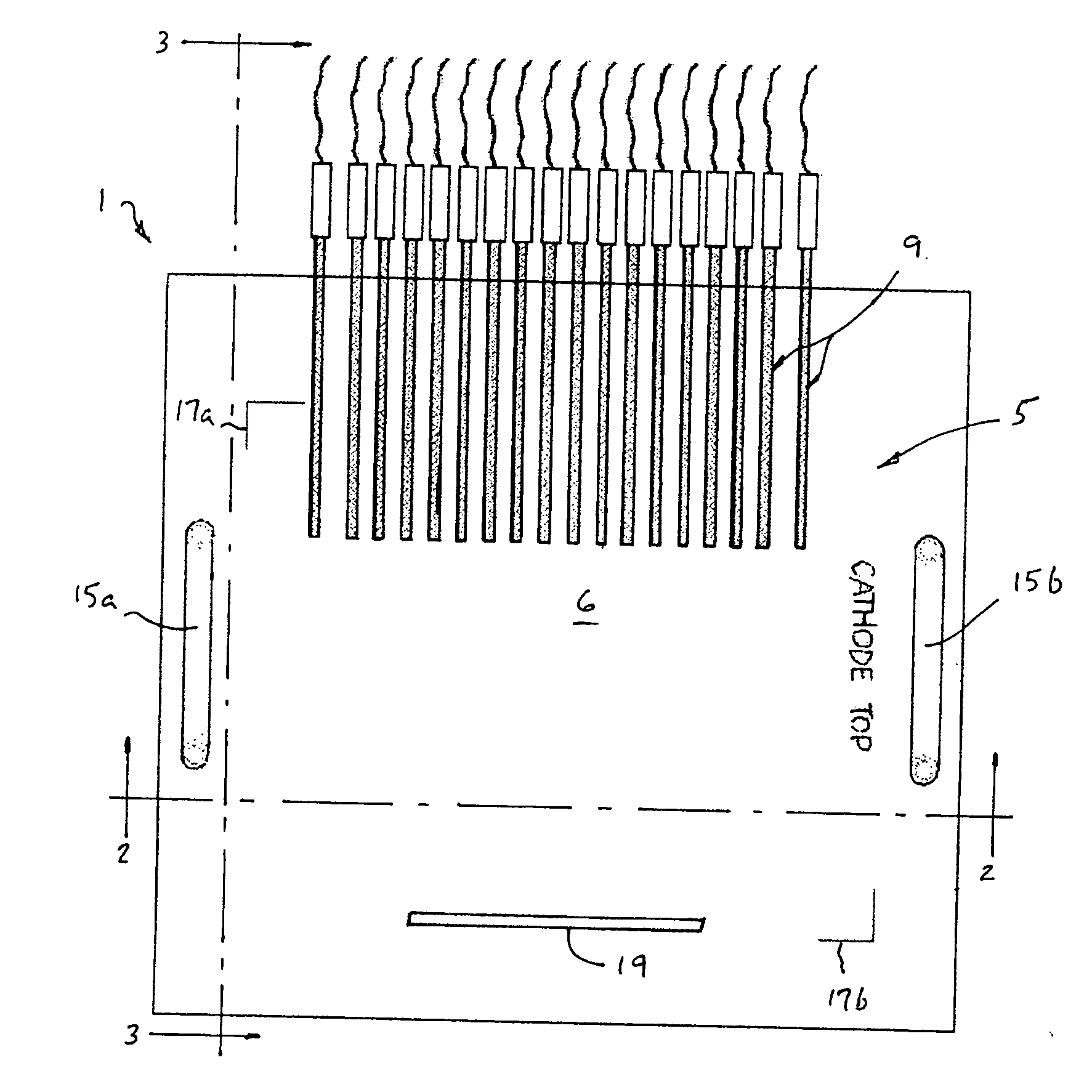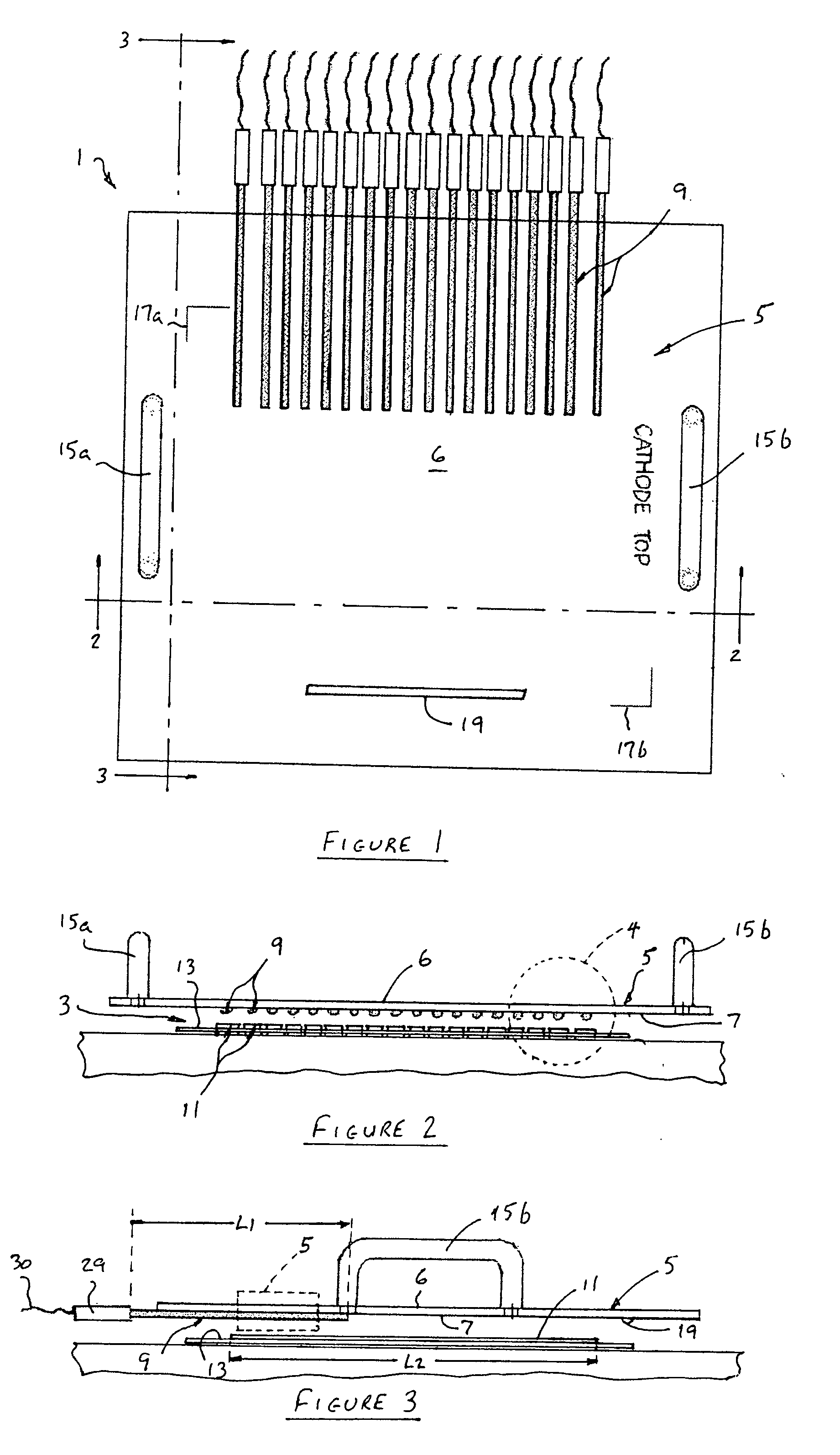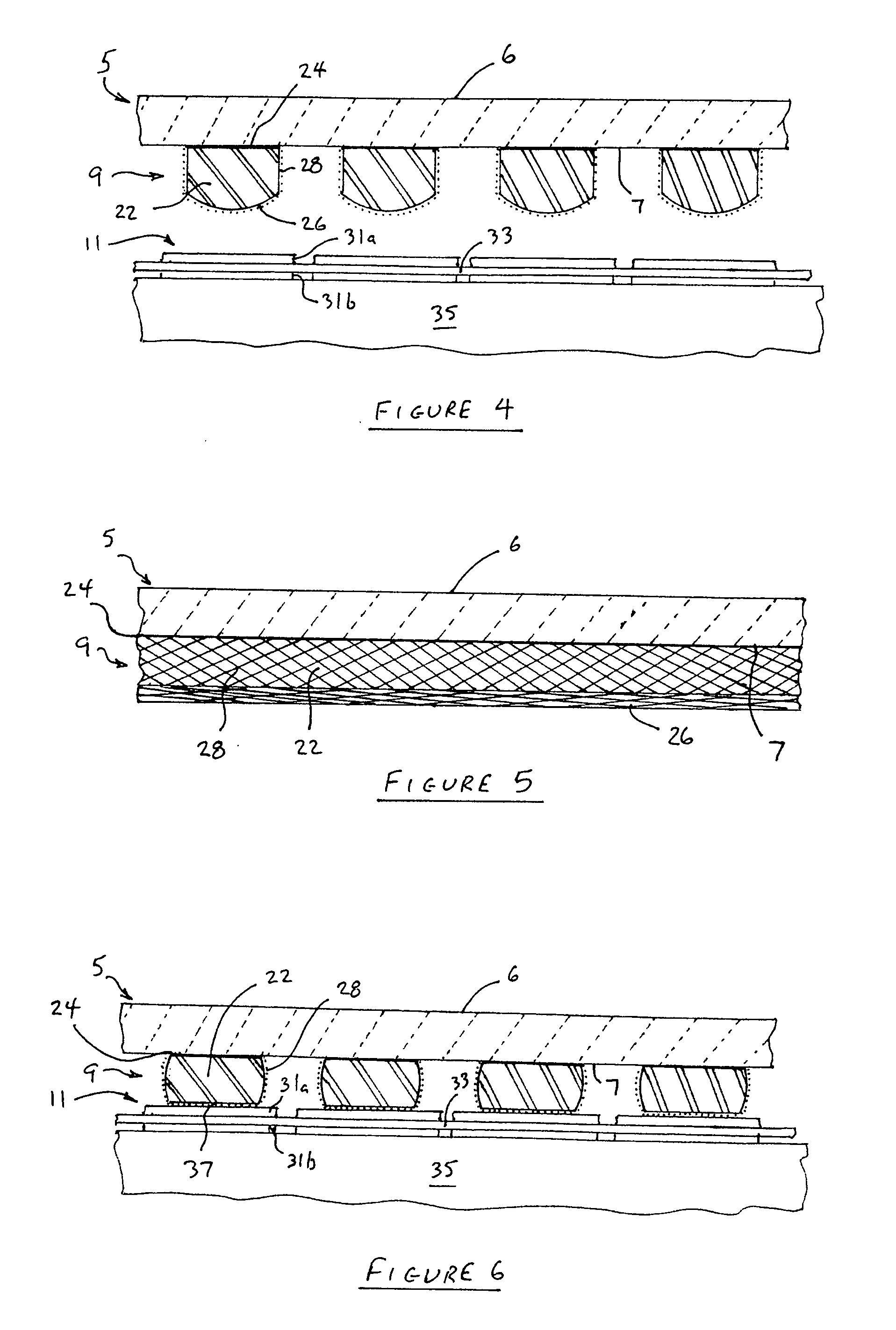Circuit testing device for solid oxide fuel cell
- Summary
- Abstract
- Description
- Claims
- Application Information
AI Technical Summary
Benefits of technology
Problems solved by technology
Method used
Image
Examples
Embodiment Construction
[0019]With reference now to FIGS. 1 and 2, wherein like numerals designate like components throughout all the several Figures, the circuit testing device 1 of the invention is particularly adapted for testing the circuitry of multi-cell, ceramic sheet-type solid oxide fuel cells 3. To this end, the circuit testing device 1 includes a support member in the form of support plate 5, although the support member may assume shapes other than a flat plate shape. Plate 5 is preferably formed from a transparent, non-conducting material such as Plexiglas® in order to provide a light conducting portion 6 for a purpose described hereinafter, although the device 1 could also be made to operate if the plate 5 were made of a translucent material with the properties of tracing paper. The length and width of the plate 5 should be selected so that it completely covers and overlaps the sheet-type fuel cell (as shown in FIG. 7). The number of resilient contacts 9 is the same as the number of cells 11 i...
PUM
 Login to View More
Login to View More Abstract
Description
Claims
Application Information
 Login to View More
Login to View More - R&D
- Intellectual Property
- Life Sciences
- Materials
- Tech Scout
- Unparalleled Data Quality
- Higher Quality Content
- 60% Fewer Hallucinations
Browse by: Latest US Patents, China's latest patents, Technical Efficacy Thesaurus, Application Domain, Technology Topic, Popular Technical Reports.
© 2025 PatSnap. All rights reserved.Legal|Privacy policy|Modern Slavery Act Transparency Statement|Sitemap|About US| Contact US: help@patsnap.com



